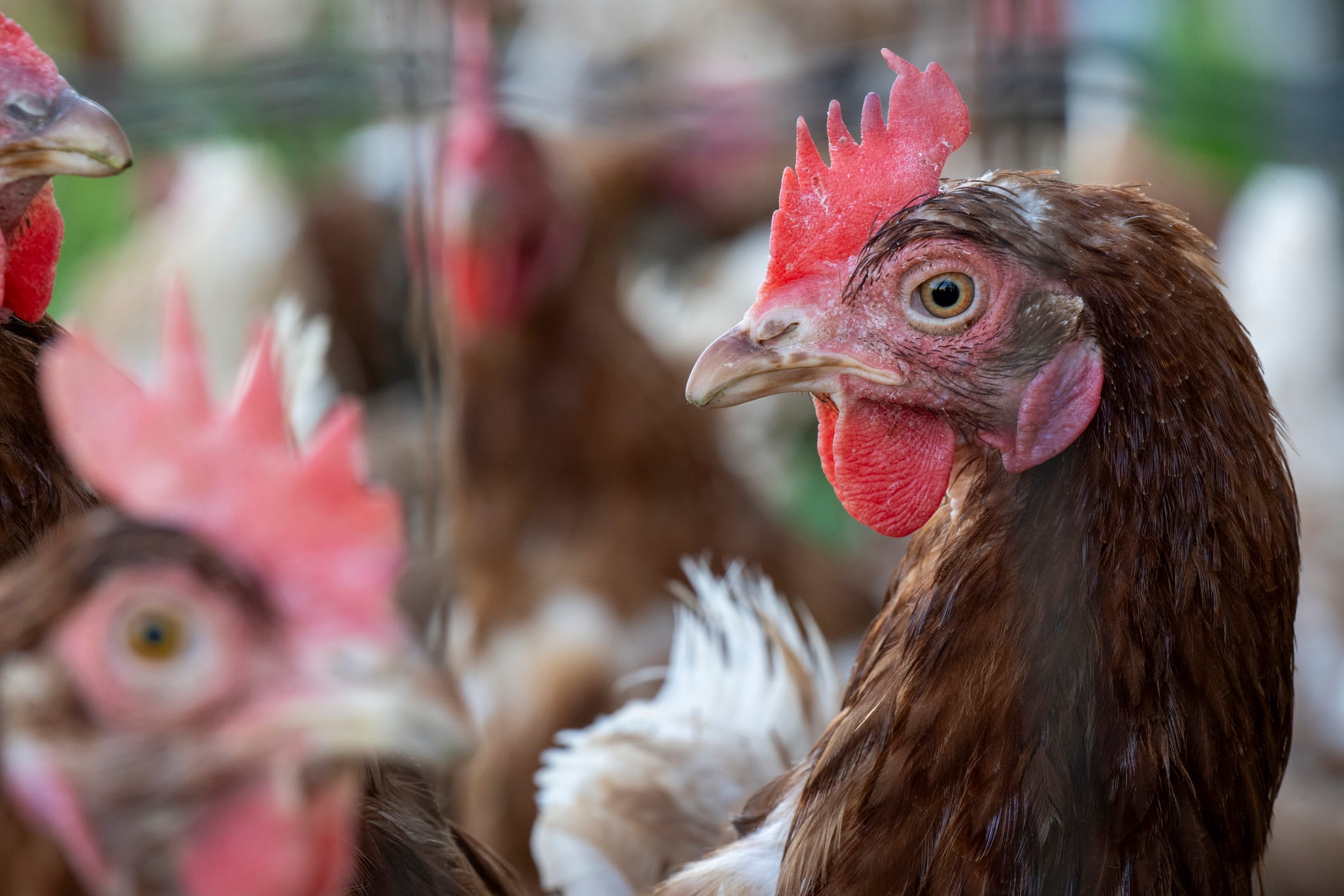The sixth report shows general improvements across KFC’s performance on chicken welfare in 2024 which are guided by its ‘Trust in Every Bite Cycle’ framework.
This framework is at the heart of its welfare strategy and engages suppliers through anonymous benchmarking of key metrics, regular review sessions, and joint action planning.
KFC welfare results
Since its implementation in 2022, the fast-food chain says it has seen a 15 percent point improvement in welfare performance on important key welfare indicators.
Whilst 2023 posed ‘significant challenges’ for KFC chicken welfare, with declining performance in the areas of antibiotic and HPCIA usage following seven years of decreasing total use, these trends were reversed in 2024.
In 2024, total antibiotic use reduced by 50%, from 16.84 in 2023 to 8.51 mg/kg; meanwhile HPCIA use witnessed a reduction of 47% from 2.20 to 1.16 mg/kg.
KFC also saw more birds with access to different types of environmental enrichment, an increase in the number of birds transported under four hours, and a rise from 3.6% in 2023 to 19.9% in 2024 (+16.3%) in the number of birds raised at 30Kg/m2 or less.
However, other key welfare indictors wavered, with a rise in both hock burn (10.51% to 12.17%) and pododermatitis rates (27.22% to 30.39%).
“Addressing this, and maintaining the great results achieved in 2024, will be the focus of the programme moving forward,” the report acknowledges.
What is hock burn and pododermatitis?
Pododermatitis and hock burns are forms of contact dermatitis. This refers to the inflammation and damage of the skin caused by prolonged contact with wet litter, leading to painful lesions.
Even with reduced stocking densities and good litter management, fast-growing broiler breeds remain at a higher risk of developing contact dermatitis due to their rapid growth and associated conformation changes, and decreased leg health. These impair mobility and increase time spent sitting in contact with the litter.
Slower-growing breeds on the other hand have been consistently shown to possess better leg health and lower incidences of footpad dermatitis and hock burn.
Calls for slower-growing breeds
Animal welfare activist group Humane League has announced its intention to protest further in light of KFC’s report and will be targeting its franchises across the country.
This follows a summer of protests from the group after the restaurant chain pedalled back on its promise to stop buying fast-growing chicken breeds by 2026.
KFC had committed to the Better Chicken Commitment (BCC) in 2019 before revealing it would not be able to achieve this timeline last year.
The business blamed supply as an issue, stating that there is an inadequate pipeline of slow-growing chicken breeds because farmers aren’t switching to high enough levels.
“KFC once promised to stop using these breeds – we ask them to hold true to their word, and publish a new roadmap for change,” commented Jodi Darwood, campaigner at The Humane League.
Speaking at the Egg & Poultry Industry Conference in November 2024, KFC UK and Ireland head of sustainability, Ruth Edge, said that 2026 goal represented an “unachievable timescale” for the firm. Nonetheless, the business remains committed to the BCC framework.
Avian flu is also continuing to have a major impact on the poultry sector, with the poultry sector facing the reality of losing millions of birds across Europe. This is not just a challenge for KFC, or just the food industry, but one impacting wildlife around the world.
While outbreaks have slowed down in recent months, detections in poultry production remain high which continues to result in significant loss of flocks, and the knock-on effect to the wider supply chain will continue to be felt. There has been a new outbreak in the UK just this week.
Dan McAlpine, senior food manager at Compassion in World Farming - one of the NGOs behind the BCC - told Food Manufacture: “The rise in hock burn and pododermatitis rates is deeply concerning and underscores why KFC must move forward with the Better Chicken Commitment. These painful conditions - forms of contact dermatitis- occur when birds spend prolonged periods sitting in wet litter, leading to skin inflammation and lesions. Fast-growing breeds are particularly vulnerable due to poor leg health, rapid growth, and reduced mobility, which increase time spent in contact with soiled litter.
“Research consistently shows that even with good litter management, fast-growing breeds experience higher prevalence and severity of contact dermatitis compared to slower-growing breeds. Slower-growing chickens are more active, have better leg health, and display natural behaviours, making them far more resilient to environmental challenges.
“By adopting slower-growing breeds alongside strong management practices, KFC could significantly reduce these welfare issues and improve the lives of millions of chickens. The rise in hock burn and pododermatitis underscores the need for full implementation of all Better Chicken Commitment criteria to deliver holistic improvements in bird health and welfare. We call on KFC to honour its pledge and take decisive action now to uphold its responsibility to animal welfare.”
More than 380 businesses in the UK and EU have signed the BCC so far, including Greggs, Waitrose, Burger King and Marks & Spencer.


